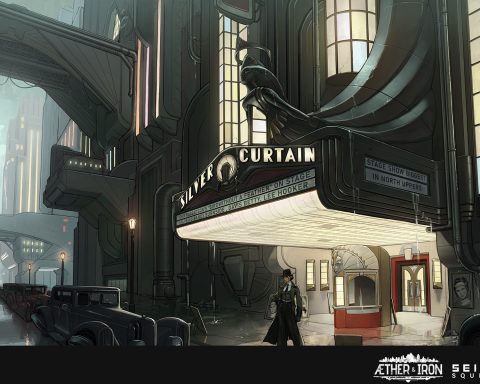I guess was inevitable that at some point someone would look at bringing the Slay The Spire-style roguelike formula to Puzzle Quest. In fact, I’m surprised that it hasn’t happened yet (or, at least, I haven’t heard of one before now). But that’s okay. Good Shepherd’s Demon’s Mirror has come along to fill the hole.
It’s a really odd one, too, because there is surprisingly little that has been done to actually combine the two forms of gameplay. You move around a map one space at a time, roguelike-style, encountering enemies, loot, shops and the standard bevy of roguelike events along the way.
When you run into an enemy, you have two separate play spaces pop up. On the right had of the screen is the Puzzle Quest grid, complete with attack, defence and resource icons. And then at the bottom of the screen, you’ve got a Slay The Spire-style hand of cards, and a number of action points for your turn. Many of the cards you can play by spending action points and never even involve the puzzle grid. Alternatively, many of the actions that you take on the puzzle grid cost action points, but don’t interact with the cards in any way.
Some cards do require you to collect a certain amount of resources from the grid, and the enemies can both directly attack you and manipulate the board on their turn, so you do need to pay attention to both, but I was genuinely surprised that the game comes across as having these two forms of gameplay running more-or-less parallel to one another than being more tightly integrated.
Of course, I am only a short way into the overall experience, and this may well change as decks become more powerful and complex, and the enemies become more challenging. I don’t mind either way, though, because this dual-combat system is a lot of fun to tinker around with, and does open up some tactical options that would not be so viable if the systems were tightly wound together. For example, if you get a hand of cards that are filled with useless stuff, you can spend a turn focused on working the puzzle board. Alternatively, you can spend one action each turn over the course of several turns to manipulate the board into some brutal attack while using your cards to avoid having to pull the trigger on the big match-up too early.
There are over 200 cards in the game, which suggests that there’s a lot of variety and replay value (which is, of course, the entire point of the roguelike formula). It’s a lot of fun to tinker around and work out what will help you have the perfect run, too. Min-Max players have always appreciated that about Slay The Spire, and it applies here too. The puzzle board, meanwhile, is a timeless form of gameplay in its own right.
I would like to have seen the developers take inspiration from Puzzle Quest in other ways, though. Puzzle Quest, first and foremost, had a narrative, quests and an RPG structure. While it wasn’t particularly inspiring, as a very standard fantasy journey, it was enjoyable and gave important context to your characters and the world.
The big problem with these Slay The Spire-inspired roguelikes is that there is very little narrative and worldbuilding. The assumption is that the gameplay is compelling enough that as everything is visually charming, that’s enough. Demon’s Mirror IS visually charming, with both the sprites for characters and enemies and the cards being particularly enjoyable to look at. But it needed context. I want to know why I should care about being on this adventure. I want a narrative that I can engage with. I want some personality to go with everything.
With that being said I do think that Demon’s Mirror is on to being something good. It might not be innovative in the way that both Puzzle Quest and Slay The Spire were, but it’s taking two very good things and giving players a game that uses both of them well. I have no idea whether there is burnout happening with roguelikes – there really are so many to choose between – but I do think this one has a better-than-zero chance at re-inspiring lapsed Slay The Spire fans.











